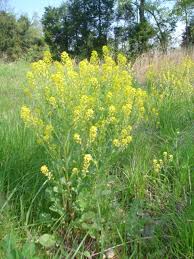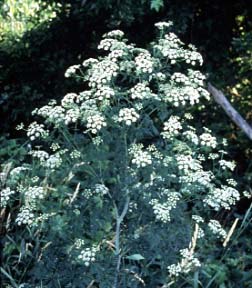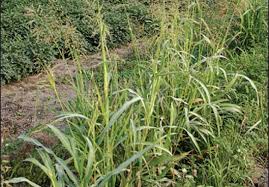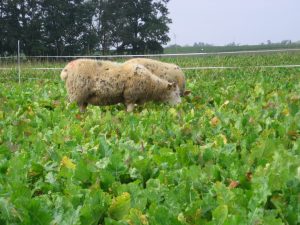– Victor Shelton, NRCS State Agronomist/Grazing Specialist
It seems that we try and crowd way too much into some months, especially December, when we probably should be slowing down and enjoying family and friends and the reason for the season. I have a hard time accomplishing that.

What percent of this pasture is clover?
I just spent a week on the Tennessee-Kentucky line with a national work team revising the NRCS pasture condition scoresheet. Pasture regions across the nation were represented, including Alaska. Our charge was basically to build a better mousetrap; well, rather a better pasture condition scoresheet, which would work anywhere tame pasture exists, cover all grazing systems, use simple visual indicators, and include some soil regenerative features.
After revising, rewriting, testing, and repeating that process several times we were all mentally and physically exhausted. Remarkably, we came to a consensus and I look forward for the release of this revised tool in the near future. I mention this because all of the people in this group are somewhat like-minded when it comes to pasture management, but we all do not “see” things the same way.
The amount of clover present in a field can be somewhat difficult to estimate. Clover, or any leguminous plant are important sources of nitrogen for pastures and also certainly improve the forage quality for the grazing livestock. This time of year, most legumes have really slowed down or have already gone dormant. I hope that you have observed the amount of clover you have in each field so you know if it is sufficient or not as we start preparing for the 2018 forage season. Pastures that have little or no legumes present often lack sufficient nitrogen unless an alternative means is used.
Ideally, about 30 to 40 percent of the pasture sward should be legumes by dry weight to maintain forage quality and to provide sufficient nitrogen. Without getting too far off subject, legumes vary on the amount of nitrogen they provide, their forage quality, and also positive and negative attributes.
Legumes fix nitrogen in root nodules. Rhizobia bacteria in the soil enter the root. The correct rhizobium bacteria must be present for the species present, thus the reason for making sure that you inoculate seed prior to planting legumes. Those nodules if you cut them open will turn from a white or gray to a nice pink over time, which indicates nitrogen fixation is occurring. That reddish color comes from leghemoglobin that is the controlling factor for oxygen flow for the bacteria. Note the “globin” on the end, very similar to hemoglobin in your blood.
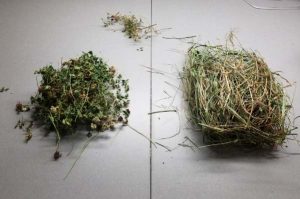

Dried clipping of above picture. Clover is 22% of the sward by dry weight.
Generally, improved white clovers provide the most nitrogen. Red clover also can provide a good amount, plus it has added benefits when used in tall fescue fields, but I’ll revisit that subject another time. When estimating the amount of clover, visual estimates are precarious at best, especially if done by windshield. If you stand in the field during the normal growing season and look down, you can get a somewhat decent estimate by observing what amount of occupied canopy is the legume. Sticking to clovers for now, that visual estimate is generally about half what the actual dry matter weight is going to be. In other words, if it appears that the clover is about fifty percent of the canopy cover, then the dry matter percentage is generally about 25 percent.
If you want to see this illustrated, take a clipping from a represented site, separate out the legumes, weeds and forbs from the grass, and then dry them down and weigh each when dry. For most of cool season legumes, you’ll find that that visual estimate will hold true at about 50 percent at dry weight. If the pastures contain less than 20 percent by dry weight, then it would be advantageous to add more legumes to the pasture. I actually prefer an amount greater than that, 30 to 40 percent by dry weight.
Certainly, you can get too much clover in some cases, especially with legumes that can cause bloat. Higher percentages need to be managed carefully. Now is the time to be ordering clover seed for frostseeding if you have not done so already. Typically, you will want about six to eight pounds per acre of red clover at pure live seeding rates or one to two pounds of improved white clovers. White clover seed is much smaller seed with a lot more seeds per pound than reds and will cause more bloat issues if there is too much. Coated, inoculated seed is probably ideal for the white clovers. Bulk pounds per acre will be more if using coated seed due to the inert coating which is generally about 33 to 34 percent of the bulk rate. Look closely at germination and purity percentages when buying seed as generally you get what you pay for.
We’ve had some unusually warm spells the last few weeks. Forages that really should’ve been dormant by now have continued to grow some. Could you, should you, graze it? If you need to supplement the pasture with more legumes by frost seeding later this winter, then grazing it will help suppress spring growth some and reduce competition for the clover. If not, then it is best to wait at least until the grass has decided that winter really is here and goes dormant.
Those root reserves will help jumpstart spring growth if not compromised, and it certainly doesn’t hurt to leave a little growth behind. That combined live plant residual and dead plant residue will be valuable over winter for slowing runoff, protecting the soil from erosion, and improving infiltration. The combination of more above-ground residual material and more live roots below ground will also make for quicker growth of a new solar panel of leaves in the spring. Leaving at least one or two pastures with a fair amount of residual to mix with that lush, high moisture spring grass is also beneficial and makes a great place for spring calving.
Keep on grazing!

